Floor mattresses offer a short-term solution for anyone who suddenly needs a place to sleep. Maybe you’re going on an impromptu camping trip, or maybe you threw a party and don’t want to send your friends home in the middle of the night. Below, we’ve picked some of the best floor mattresses available today.
Best Floor Mattress – 2024
- Better Habit SleepReady – Best Overall
- Best Price Mattress – Best for Cradling the Body
- Millard Tri-Folding Memory Foam Mattress – Best for Restless Sleepers
- Willpo Memory Foam Camping Mattress – Best for Versatility
- Inofia Folding Mattress – Best for Thickness
Best Overall – Better Habitat SleepReady
BetterHabitat SleepReady Portable Floor Mattress
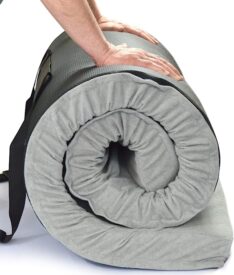
Rollable floor mattress with a bamboo cover and thick, Certi-PUR-US certified memory foam.
Sleepopolis Score
4.50 / 5





Expert Opinion
This mattress is perfect for both accommodating unexpected guests or improving the comfort of your outdoor activities. It’s three inches thick and offers plenty of support for combination sleepers — even those with larger body types.
But the thing that really makes SleepReady one of the best floor mattresses is in its name: the floor mat is literally ready in seconds. Just unclip the straps and unroll the mattress. No bedding required.
Pros of the Better Habitat SleepReady Floor Mattress
- This mattress definitely has a medium level of support and a softer feel. If you want to sleep on the floor without feeling like you’re sleeping on the floor, it could be a good fit for you.
- It comes with a removable cotton terry cover to help hot sleepers stay cool.
- It’s made with CertiPUR-US foams, which are free of any harsh chemicals.
Cons of the Better Habitat SleepReady Floor Mattress
- It only comes in two sizes: single and twin.
- It has a waterproof, anti-skid bottom, which helps add durability, but it can also start to chip away in patches after three to four washes.
Best for Cradling the Body – Best Price Mattress
Best Price Folding Mattress
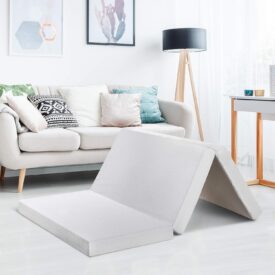
Made from sturdy plant-based memory foam, this tri-fold mattress should be able to accommodate larger sleepers.
Sleepopolis Score
4.50 / 5





Expert Opinion
At a whopping four inches thick, the tri-fold Best Price Mattress packs two layers under the cover and can offer deep body contouring, even for heavier sleepers. Its upper layer is made of plant-based memory foam, with a decent hug and good temperature neutrality. You should sleep relatively cool on this mattress even on a summer night.
The base layer is made of dense memory foam, ensuring low motion transfer and uniform weight distribution. This model should support proper spine alignment and may suit back and side sleepers the most.
Pros of the Best Price Mattress
- An anti-slip bottom keeps the mattress in place on the floor and should keep restless sleepers from waking up.
- A washable cover makes for effortless maintenance
- It comes in many sizes, including one that’s RV-friendly. So you can get a suitable bed for your trailer to ensure more comfort on the road.
Cons of the Best Price Mattress
- The seams of the mattress feel a little delicate, so you have to be careful when unrolling it.
Best for Restless Sleepers – Milliard Tri-Folding Memory Foam Mattress
Milliard Tri-Folding Mattress
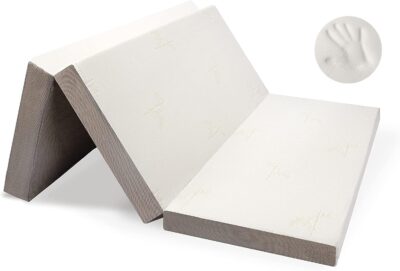
The compact design makes this tri-fold mattress a good fit for small spaces, and its materials make it adept at isolating motion.
Sleepopolis Score
4.70 / 5





Expert Opinion
We chose the Millard Tri-fold Mattress as our pick for restless sleepers due to its ability to isolate motion and redistribute weight, as well as its compact design. Its memory foam is thick and, in addition to hugging the body, can restrict movements to keep vibrations from rippling across the mattress. And when you’re done sleeping on it, the tri-fold design allows you to fold it up and easily store it away.
Pros of the Milliard Tri-Folding Memory Foam Mattress
- In total, there are three pounds of dense memory foam to help you sleep more deeply.
- At 1.5 inches thick, the memory foam helps cradle sore joints.
- There’s a high-density core to help keep the spine in a neutral alignment.
Cons of the Milliard Tri-Folding Memory Foam Mattress
- It doesn’t feel cradling enough for heavier side sleepers. They might sink through the memory foam to the high-density core below.
Most Versatile – Willpo Memory Foam Camping Mattress
Willpo Memory Foam Camping Mattress
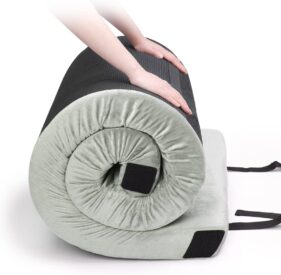
A combination of memory foam and support foam gives this camping mattress both stability and comfort.
Expert Opinion
The Willpo can be used for everything from yoga to camping to occasional guests, and even as a play area for your kids. This roll-up mattress is almost three inches thick, made with dense foam for a medium-firm feel. It’s durable, while also offering some nice contouring, making it suitable for all sleeping positions. It’s also responsive enough for combination sleepers to be able to change positions.
Pros of the Willpo Memory Foam Camping Mattress
- It has an anti-slip bottom to keep the mattress in place.
- There’s also a removable and machine-washable cover.
- It comes with a storage bag, allowing for easy transportation.
Cons of the Willpo Memory Foam Camping Mattress
- It may not be firm or supportive enough for heavy sleepers over 250 pounds.
- We found it a little difficult to roll back up.
Best Thickness – Inofia Folding Mattress
Inofia Folding Mattress

At six inches thick, this floor mattress offers plenty of support, while still folding up for easy storage.
Expert Opinion
The Inofia is thicker than all of the other ones on this list — 6 inches thick, in fact. This allows it to easily support larger sleepers and help them sleep soundly. We found that it had a medium-firm feel that conformed pretty closely to the body, relaxing the pressure points at the shoulders and hips. But the thickness results in more than enough support for the spine.
Pros of the Inofia Folding Mattress
- It has a bamboo cover and temperature-neutral foam that should be comfortable for hot sleepers.
- Mesh sides also assist with air circulation, which in turn assists with cooling.
- There’s an anti-sleep bottom, which should help the mattress stay in place if you’re a restless sleeper.
Cons of the Inofia Folding Mattress
- It may take some time to fully expand after unpacking.
- It’s a bit more expensive than some of the other floor mattresses on this list.
Types of Floor Mattresses and Their Features
Some proponents of floor sleeping suggest that adopting natural sleeping postures — and sleeping on the bare floor — may reduce low back pain and joint stiffness. But there still isn’t much research into the topic of whether sleeping on a floor mattress is good or bad for your health. But you can rest assured that it definitely won’t be good for you if you choose the wrong mattress type.
So, let’s see what floor mattress types there actually are and which one of them will be the most beneficial to you.
Foldable Mattresses
As the most common type on the market, foldable models usually come in the following variations:
- Standard tri-fold mats that can be used for sleeping or other activities, such as yoga or camping.
- Convertible mattresses, which have four or more sections and can turn into a sofa.
Typically, foldable mattresses are made of denser foams to withstand active use, which is why they tend to be firmer than other types. Also, they might be thicker than other types and offer more cradling, so they may perfectly work for heavy users and couples.
Roll-Up Mattresses
Roll-up mattresses are the second most common option for those who need a floor mat. Here are their main features:
- More compact. Roll-up mattresses, in most cases, are thinner than foldable ones — and hence, more lightweight.
- Softer feel. Since these mats need to be rolled for storage, they’re made of more flexible foam and generally have a softer feel.
- More versatile. This is the result of the two points above. Smaller weight and plush foams make roll-ups a decent pick not only for sleeping, but for other activities too.
Floor Futons
Technically, floor futons are a kind of roll-up mattress, but I gave them a separate category because they have a couple of distinctive features:
- Traditional floor futons consist of several elements. There’s the futon itself, the duvet cover, and the tatami mat that serves as a support layer. Some sets might also include a small pillow.
- Futons may be filled with fibers only or have a foam core with fiber padding around it, while standard roll-ups are mostly made of foam only.
- Traditional futons can only be used indoors, whereas other roll-up mattresses may have a waterproof bottom layer or cover which allows you to use them for camping and outdoor activities.
Pros and Cons of Floor Mattresses for Everyday Use
Floor sleeping definitely isn’t for everyone, but it certainly has some benefits, such as:
- You sleep cooler. Cold air is denser and migrates towards the floor, while heated air rises. If you’re prone to hot sleeping, you can switch your regular bed for a floor mat and see if your sleep quality improves.
- It might improve your posture. The bare floor is hard to sleep on. But when used as a substitute for a platform bed, it could help your spine obtain straight positioning and even improve slouching over time.
- It might help treat sciatica. Sciatica is a type of pain that involves your sciatic nerve. This nerve runs through your lower back, hips, and buttocks and when inflamed, can trigger acute pain in these areas. Some doctors suggest that sciatica can be treated by sleeping on a firmer bed, so you can use a floor mat as an alternative to your regular mattress.
Possible drawbacks of floor sleeping include:
- Increased exposure to allergens. We all know that the floor quickly collects dust and debris, which can trigger your allergic episode.
- If you have weak knees, it’s better to sleep on a regular bed, as getting up from the floor may be too painful.
What to Consider Before Purchasing a Good Floor Mattress
We suggest you ask yourself the following questions before investing in a new floor mattress:
How often do you plan to use it?
If you’re buying a mattress for occasional use and will store it most of the time, I’d suggest you go for a roll-up model. Foldable models are more supportive and make a great pick for regular sleeping, but they’re also bulkier, even in the folded state. Some users worry about mold growth when using their mattress on the floor nightly. While this factor depends on the environment in the room, you can try adding a simple low platform for improved air flow if you wish.
How big is your room?
Those who live in a small apartment will probably try to make the most of every inch of space. In this case, a convertible floor mattress can be a good pick, as it combines several pieces of furniture in one. A twin or queen roll-up — depending on the number of sleepers you want to accommodate — will make a decent sleeping spot for a small apartment, as they’re very compact when rolled.
What firmness do you need?
A preferred level of firmness is tied to your weight, sleeping position and overall preferences. Roll-ups tend to be softer, so they might suit average-weight users who sleep on their back or side. Thicker and firmer models, which you typically find among foldable floor mattresses, can become a better pick for large sleepers and solid back or stomach sleepers.
Any extra features?
If you plan on using your floor bed only indoors, you probably don’t need a waterproof lining, so you shouldn’t overpay for this feature. At the same time, those who need a more versatile mattress should look for a durable, washable cover that can withstand active use.
Our Review Process
Our team of Certified Sleep Science Coaches has reviewed more than 400 products in our lab, testing each one on different performance factors so we can make informed recommendations.
When selecting the best floor mattresses, we paid special attention to factors such as material quality, comfort, durability, and cooling ability. We want the floor mattresses we suggest to feel as close to a traditional cozy mattress as possible, while still being a convenient sleeping space.
A Look Into the Sleepopolis Testing Lab
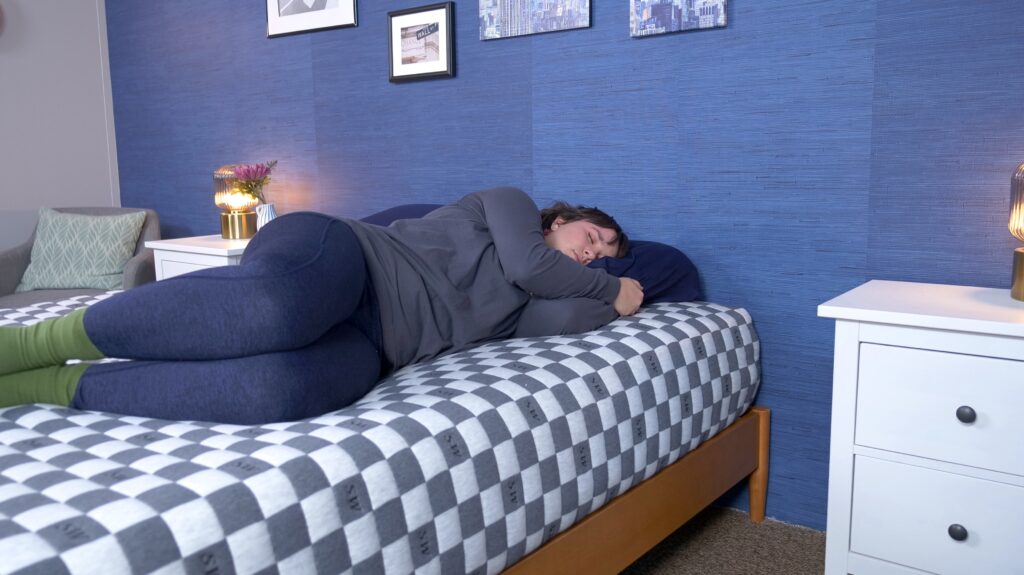
In order to ensure that we’re recommending the best mattresses to sleepers everywhere, we test each one individually in our mattress lab in Raleigh, North Carolina. Here, our team of Certified Sleep Science Coaches has reviewed more than 300 beds, putting each one through a rigorous testing process that includes measuring a mattress’s motion transfer with a seismometer, tracking its cooling capabilities with a thermal gun, and visualizing its ability to relieve pain with a pressure map.
From there, we give every bed an overall score based on its materials, comfort, support, cooling, edge support, and more. We also factor in brand performance with categories such as value and warranty.
We know that sleep is an integral part of your health, which is why we’ve developed such a detailed methodology when testing mattresses and writing our reviews. We also know that every sleeper is different when it comes to body type, sleeping position, and mattress preference. With so many factors at play, we want to give you an informed opinion so you can make an informed purchase.
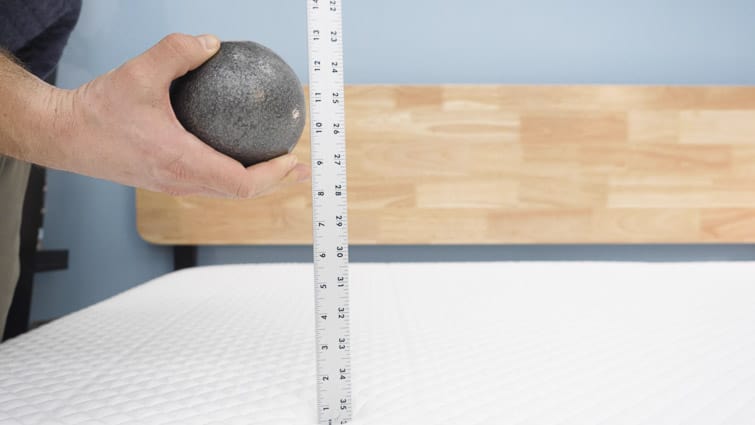
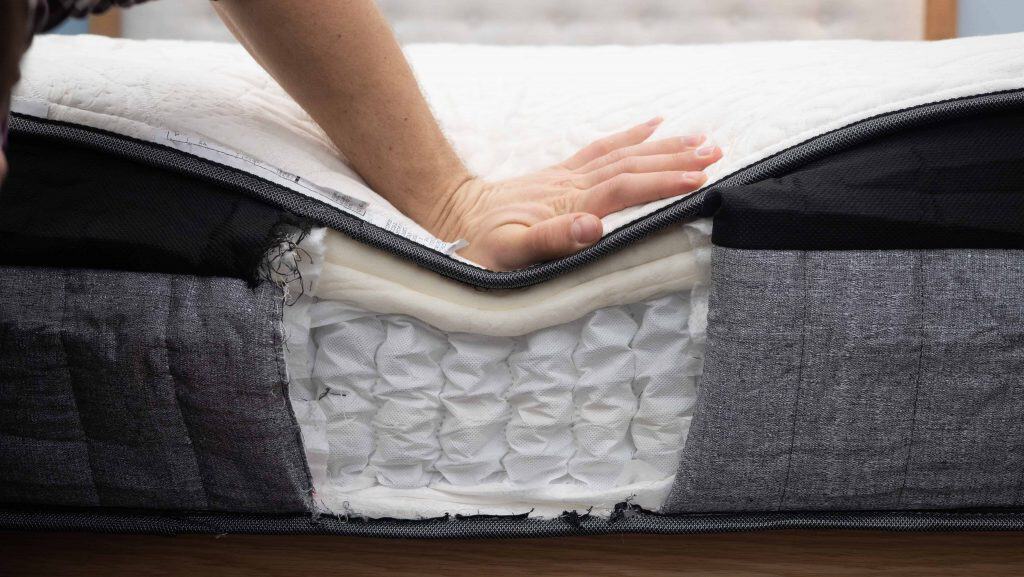
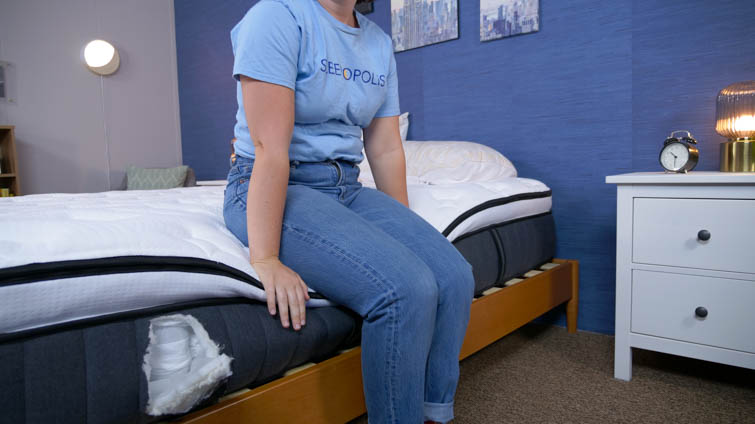
FAQs
How do you make a mattress on the floor look aesthetically pleasing?
You can add more layers to it to create a cozy look (like pillows or throw blankets). You can also try and place some accessories nearby, like a house plant or a low-profile bedside table.
How do you keep a floor mattress from sliding?
A rug placed under the mattress should help. You may also consider buying a special non-slip tape or pad.
How do you air out a floor mattress?
If you have a secure outdoor area, you can prop it up and leave it outside for a bit (just make sure it isn’t supposed to rain). Or you can just lean it against the wall.
How do you protect a mattress on the floor from bed bugs?
Using a dense mattress encasement may help you prevent bed bugs from penetrating the mattress.
What should you put under your floor mattress?
You can put a rug or a piece of cardboard under your floor mattress to ensure a better grip and some insulation. Alternatively, you can use a bunkie board for improved airflow.

How to Practice Good Sleep Hygiene
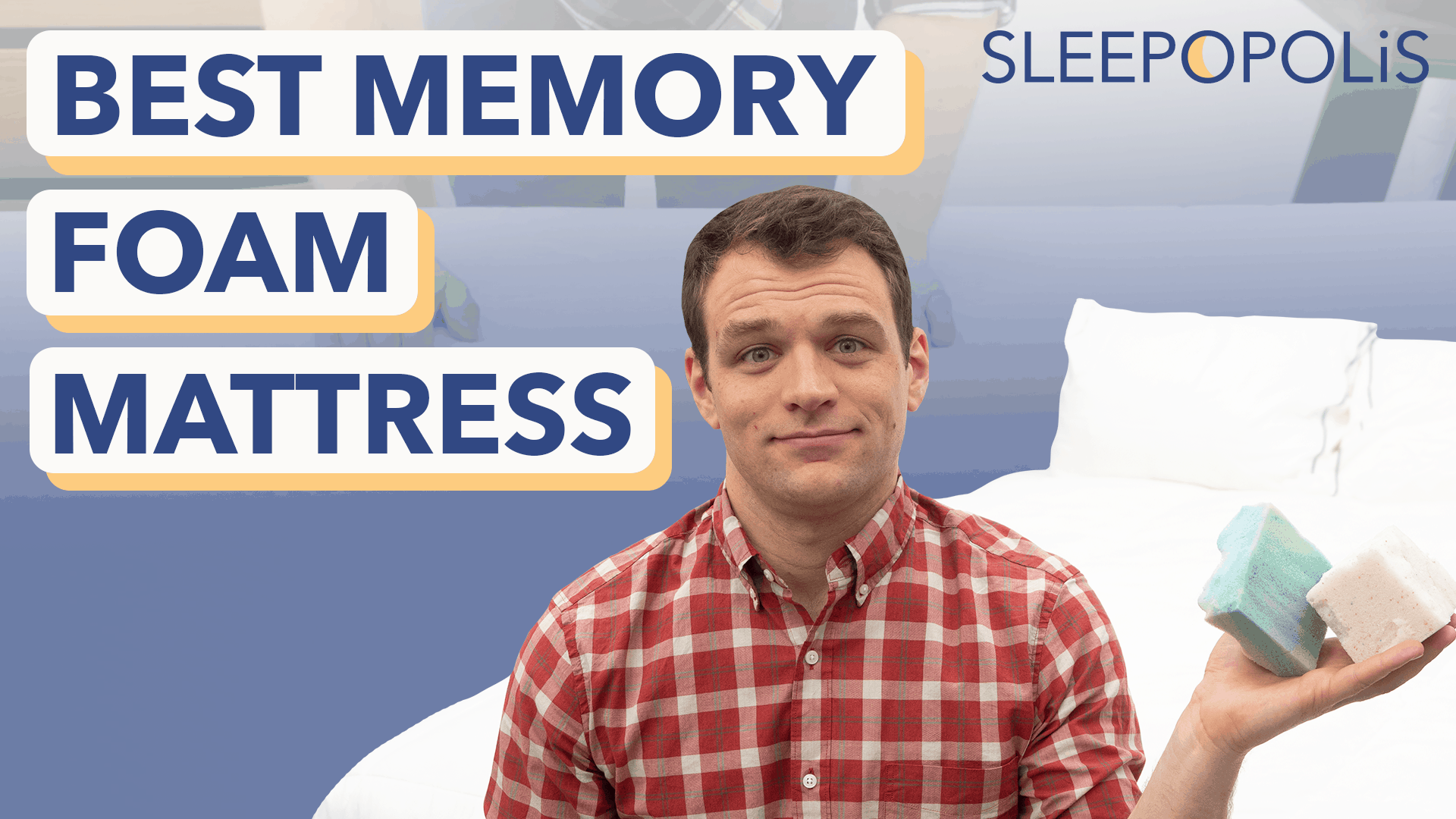
Best Memory Foam Mattress
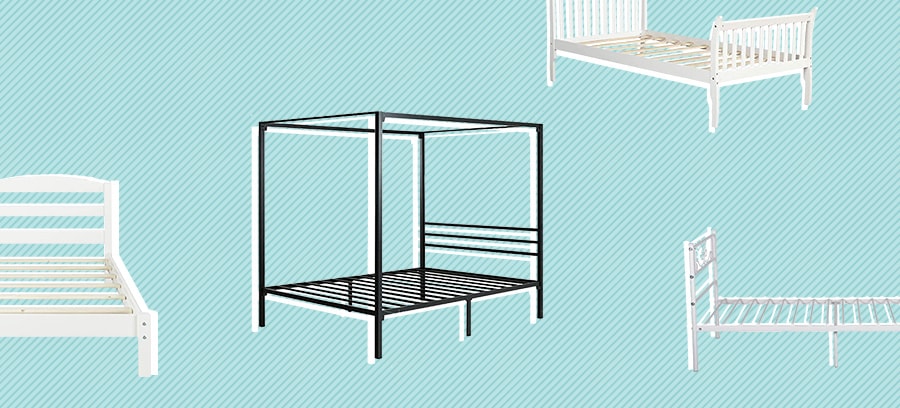
Best Twin Bed Frame
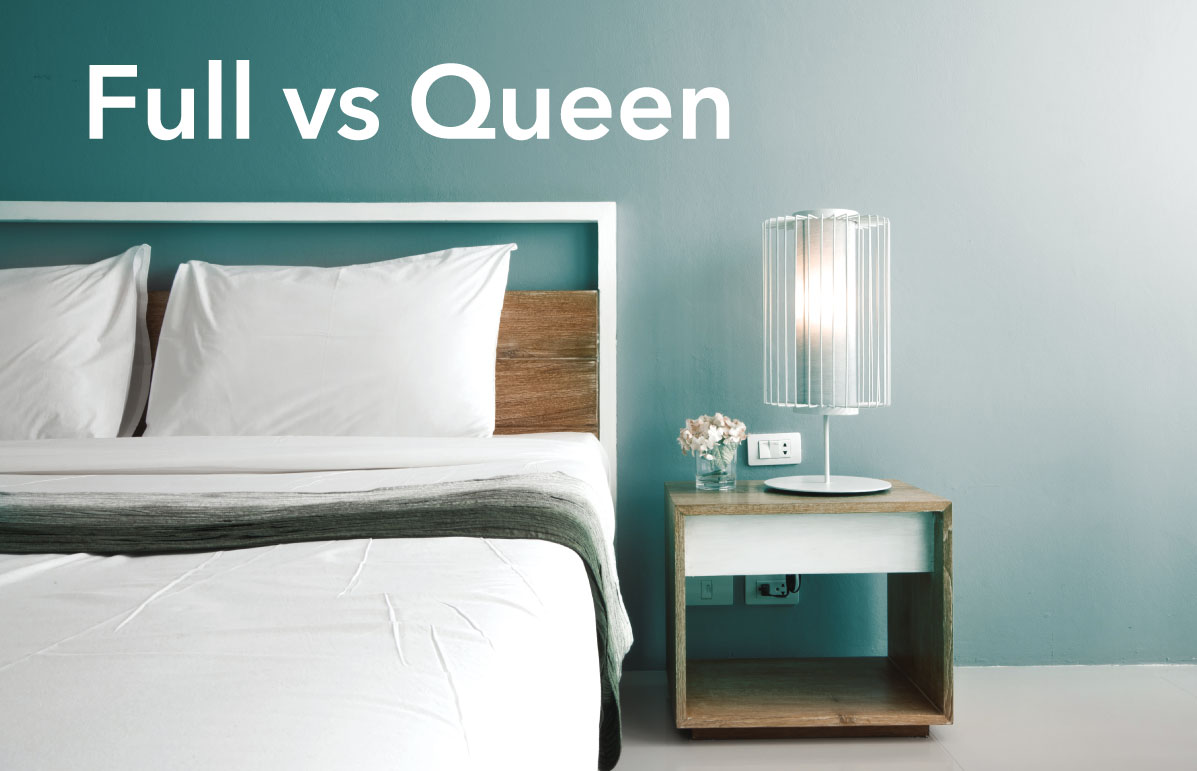
Full vs Queen Mattress

Dan Caffrey
Senior Performance Editor
About Author
Dan is a Performance Editor and Certified Sleep Coach at Sleepopolis, where he writes and edits mattress roundups to give readers the most up-to-date information on sleep products. In 2020, Dan earned his MFA In Playwriting from UT Austin, and his plays have been seen around the country in Chicago, Austin, Washington D.C., and elsewhere. He’s also a pop-culture fanatic, having written for publications such as The A.V. Club, Consequence, Pitchfork, and Vox. He co-hosts two popular horror podcasts on the Bloody Disgusting Podcast Network — The Losers’ Club: A Stephen King Podcast and Halloweenies: A Horror Franchise Podcast. When he’s not catching up on the latest King novel, you can find Dan in and around Brooklyn walking his dog Hank, seeing a play with his wife, and going to way too many concerts.
Combination Sleeper